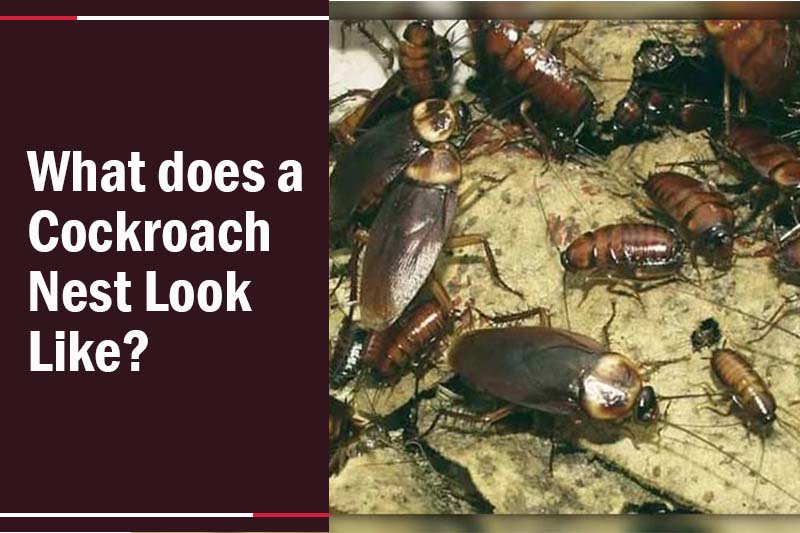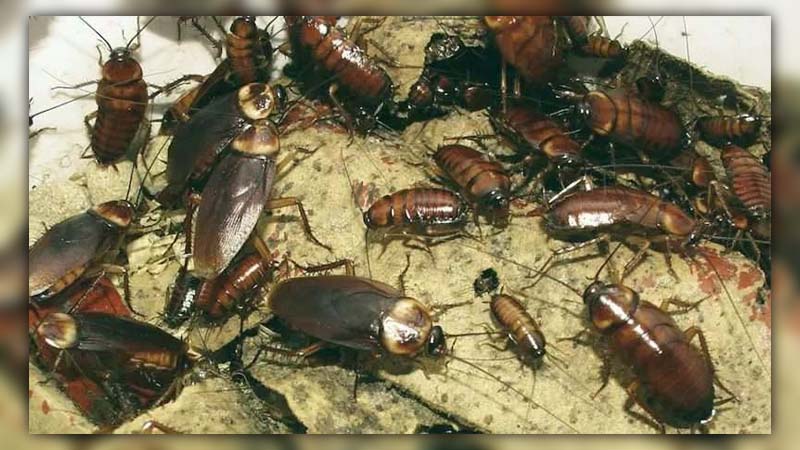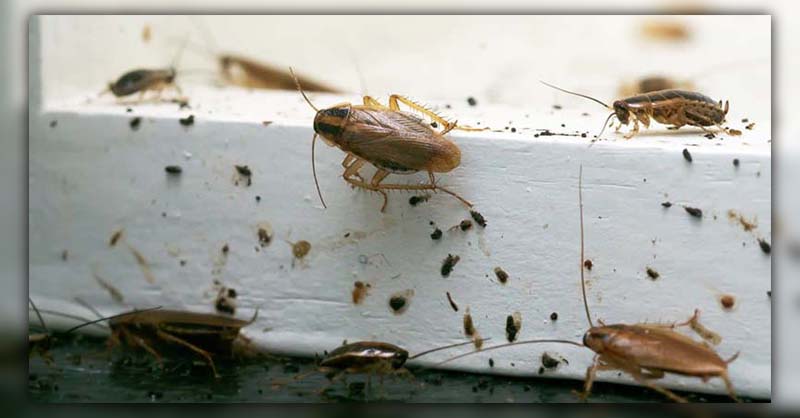Do you want to know how to find roach nest and get rid of them for good?
In this post, you will learn how to locate and eliminate roach nest from your home using natural and effective methods.

1. What does a Cockroach Nest look like?
Roaches don’t construct nests. Instead, when we mention a “roach nest,” we’re referring to a significant gathering of roaches cohabiting in a sheltered area with convenient access to food and water.
Key indicators of such congregations include the presence of shed skins and feces, along with unmistakable signs like numerous deceased roaches, egg cases, dark spots, and smears.
These egg cases are typically brown and measure less than a quarter of an inch, each having the capacity to harbor 40 or more baby roaches.
2. How to Find Cockroach Nests?
If you see just one roach at home, it might mean there’s a big problem with lots of them hiding in the walls. So, if a roach shows up, it’s important to check for signs of a nest.
One clear sign is their poop, which looks like tiny black pepper or ground coffee. If there are many roaches, you’ll notice more poop in busy areas, hinting that the nest is probably close by.
1. How to Identify a Roach Nest in the House
Roaches usually make nests in kitchens or bathrooms, especially behind fridges, in cracks, under furniture, and cozy spots. They like warm, humid places, close to food and water. But here’s the tricky part – roaches are experts at hiding.
They can squeeze into tiny spots, like under carpets or behind torn wallpaper. So, when you’re looking for their nest, keep in mind their sneaky hiding skills!
2. How to Locate a Roach Nest in Furniture
3. Finding a Roach Nest in Your Car
Sometimes, roaches decide to make cars their home, although we don’t talk about it much. They usually get into cars with a little help from us, hitching a ride on things like shopping bags, yard sale boxes, or suitcases.
Once they’re in, they stay if there’s food around. If the conditions are right, they might even start a family! The usual spots to find them in cars are under seats, in the trunk, under floor mats, and in the spare tire compartment.
4. Tips on Discovering a Roach Nest in Your Yard
The American roach is pretty common outside the house, mostly in the yard. But, here’s a heads up – if it gets cold, these big roaches might decide to crash indoors. American roaches are kinda scary because they can grow up to 2 inches long.
In the yard, you’ll usually find their nests in places like mulch piles, dumpsters, woodpiles, and storm drains.
3. Common areas where roaches nest
Subsequently, below are the potential locations where roaches may make their nests:
Bathrooms
You might think there’s no food for roaches in the bathroom, so they won’t bother invading. But, surprisingly, bathrooms, including cockroaches in the bathtub, can be cozy nesting spots. They like the warm and moist environment and the quiet time, day or night.
>> Read more: Cockroaches in Bathtub: How to Handle This Nightmare Situation.
Kitchens
Your kitchen is a favorite hiding and nesting spot for roaches due to the frequent availability of food and water. The insects can find and eat rotting leftovers, crumbs, and other organic matter in dirty dishes in the kitchen.
Laundry rooms
Laundry rooms create a cozy environment for roaches with their warmth and moisture, providing an ideal hiding spot.
While it might seem like there’s no food for them, roaches are resourceful eaters and can munch on cloth fibers, glue, and cardboard boxes, or even go without eating for a while.
Basement
Basements, often left undisturbed, can be prime spots for roach infestations and nests. Since basements typically house cardboard, books, papers, and various items that roaches can feast on, they become attractive environments.
>> Read more: Cockroach Cardboard: Effective Tactics to Get Rid of Them.
Outside the house
Certain cockroaches prefer outdoor living and only venture inside for water and food. Oriental roaches, for example, favor the coolness outdoors over the warmth inside homes.
Look for their nests beneath stones, amidst leaf piles, and near garbage cans to address their outdoor preferences.
Unused drains
Cockroaches often use drains to navigate, especially in their quest for food. Unused drains, over time, may become their settling spots, turning into potential nesting sites.
>> Read more: Roach getting into car? How To Kick Them Out!
4. How do you kill a roach nest?
To kill a roach nest, you can use a variety of methods. One way is to spray powerful insecticides and pesticides into the nest entrance. Another way is to use poisoned bait that roaches carry back to their colony.
You can also apply insecticidal dust that damages their bodies. Roach killers can be in the form of aerosol cans, pump sprays, bait boxes, traps, pellets, powders, gels, or foggers.
If you prefer natural methods, you can use Diatomaceous earth or boric acid, which are effective natural insecticides. Mix boric acid with sugar and water to attract roaches for elimination.

Conclusion
You have learned how to find roach nest and get rid of them for good using natural and effective methods.
If you want to learn more about how to deal with other pests in your home and garden, check out our other blogs from Pestweek.

Calina Mabel has over 15 years of experience in the field of journalism and communications. Currently, Calina Mabel is the Content Writer for categories such as Cockroach, Ants, Bed Bugs, Mosquito, Rodent, Termite, and Flies on Pestweek.com. She aims to build content for these categories with a focus on providing valuable and accessible information to readers, in order to create the world’s largest knowledge community about Pests.
All content written by Calina Mabel has been reviewed by Emily Carter.


